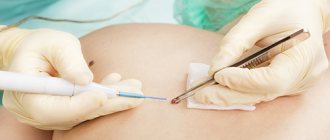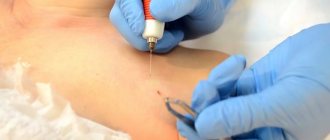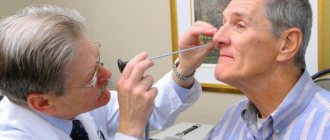Every person has encountered the problem of pigment formations on the skin. For some, a birthmark on the face is several millimeters in size and does not cause any inconvenience, while in other people such tumors reach 5 centimeters or more in diameter, requiring appropriate observation from a specialist, the correct choice of treatment and method of removing the tumor.
What is a birthmark?
A birthmark is a congenital mark on the skin. Sometimes it occurs in the first few years of a person's life. These formations differ in size, shape and color. They range in color from light yellow to dark brown. The birthmark may protrude above the skin or be flat. Sometimes people become owners of large birthmarks, which cause embarrassment, especially among the fairer sex. Most birthmarks are harmless. But at the same time, there is a chance of degeneration into melanoma for some of them.
Such pigment spots are distinguished according to the following criteria:
- flat;
- no hairs;
- light color
It is recommended to remove birthmarks that cause physical discomfort.
The presence of such signs may be a reason for excision. If a child has a spot on the palm of a hand or foot, it should be removed immediately. Most often, areas of these parts of the body are mechanically damaged. Very often they are removed from the face, as they are exposed to ultraviolet radiation and cause cosmetic discomfort.
There are these types of stains:
- regular (pigment);
- vascular.
There is no need to remove or treat ordinary pigmentation. But stains that are located in places of friction are removed. This also applies to cracking or bleeding formations. Vascular birthmarks are benign tumors. Under a microscope, it is clearly visible that they consist of small blood vessels. The color of the flat vascular spot is reddish. Such formations never develop into cancer and do not require treatment. People often try to remove a birthmark on the face to get rid of discomfort.
Information about moles
On human skin, the first nevi appear after birth, and then neoplasms appear throughout life - especially often their onset occurs in the period from 17 to 25 years - for various reasons, namely:
- Hereditary factors play a big role. Sometimes all close relatives have moles in the same place and almost the same size;
- Hormonal changes;
- Viruses that enter the body through the skin during insect bites and injuries;
- Excessive exposure to ultraviolet radiation;
- Exposure to radio and x-rays.
It is worth taking immediate action if the nevus begins to change:
- Increased in size;
- Became denser to the touch;
- Changed color, the shade became uneven;
- Cracks and micro-wounds appeared around it or directly on it, the surface began to peel off;
- The epidermis around it is constantly inflamed;
- The edges became blurry;
- Gloss on the surface;
- Sprawl;
- If it's bleeding, you should see a professional immediately.
The clinical picture is alarming and, most likely, the mole will have to be removed.
Indications
If a birthmark is injured by a razor or irritated by a piece of clothing, it must be removed. The formation may begin to change color and shape, bleeding and pain will appear. And these signs indicate the degeneration of the pigment into melanoma. To prevent this from happening, it is important to consult a doctor in time and take action.
So, it is recommended to remove birthmarks in the following cases:
- oncological indications;
- frequent injury;
- cosmetic discomfort.
How to delete?
Today there are several methods for removing nevus. They are distinguished by the following characteristics: method of exposure, severity of pain and recovery time. The operation should be performed only by an experienced and competent doctor, preferably an oncologist. This is the only way to be sure that the removed nevus will not cause the development of melanoma - skin cancer.
Operation
The most reliable and cheapest method of removal is with a scalpel. The intervention is safe and painless, as it is performed under local anesthesia. When the formation is on the face, general anesthesia may sometimes be required. This is a traditional method that has many advantages over others. Doctors believe that nevi should only be removed surgically, as this makes it possible to take tissue for histological examination.
Removal occurs in this order:
- the surgeon administers local anesthesia;
- the birthmark is cut out using a scalpel or a surgical razor;
- then the doctor stitches the edges of the wound and applies a bandage;
- the wound is observed for several days, dressings are made;
- after a week the wound heals and the stitches are removed;
- if a large nevus is cut out, the scar is subsequently removed using plastic surgery.
Care for the resulting wound is carried out according to the advice of the doctor. As a rule, this is treatment with brilliant green or the use of wound-healing medications.
Using a laser
Using pinpoint laser pulses, a nevus can be removed. The laser will help reduce pigmentation, make it invisible and stop future growth. This procedure is not always successful, as there are cases of its reappearance. But the pigment brightens quite well after several sessions. Laser birthmark removal is performed under local anesthesia. During the procedure, a burning sensation and slight tingling are felt.
Electrocoagulation
This method is characterized by thermal impact on the formation using a special device. A current is supplied to the platinum wire, which is heated to 200 degrees. With the help of this current, the formation is burned out. In this way, you can remove small nevi that protrude above the skin. Unlike laser removal, after such a procedure, material is preserved for histological examination. Even though this is an operation, there will be no bad consequences. After the wound heals, healthy skin appears.
Cryodestruction
During cryodestruction, liquid nitrogen is used. It has a very low temperature, due to which the formation instantly freezes and collapses. First, nitrogen is applied, then the hardened skin is removed with a special tool. Sometimes the procedure may need to be repeated. This is explained by the fact that there is no way to control the depth of nitrogen penetration. After the procedure, there may be a burn that prevents rapid healing. In modern medicine, this method is used extremely rarely, although it used to be very popular.
Treatment options
Damage to a mole does not always lead to degeneration. In this case, treatment of a birthmark comes down to eliminating the possibility of infection and quickly restoring the integrity of the integumentary tissue. After that, preventive examinations are carried out at home and with a specialist. If the decision has been made to delete, there are many options for how to do this. All of them have advantages and disadvantages, contraindications.
However, there are treatments for people who reject traditional medicine.
Laser removal
Removing a disgusting birthmark with a laser is one of the main methods offered to patients. The method has become widespread due to its effectiveness.
- treatment of the pathological area and surrounding skin with an antiseptic;
- administering local anesthesia by injecting the skin around the birthmark with an anesthetic solution;
- layer-by-layer removal of tumor layers using a laser.
- prevention of contact infection - do not touch the wound surface with tools and hands;
- short recovery time, healthy tissues are not damaged;
- the depth and width of the effect are determined by the characteristics of the nevus;
- there is no bleeding during surgery;
- You can remove moles on the face and chest.
- large formations are removed in several stages;
- temporary appearance of a dark mark at the site of the removed nevus;
- if care rules are not followed, there is a risk of infection;
- Allergy to laser irradiation is possible.
The procedure is contraindicated in the following cases:
- if a person suffers from diabetes, the disease slows down the processes of epithelial regeneration;
- there is a history of cancer;
- for any skin diseases (rashes, irritations);
- pregnancy, during which the sensitivity of the skin greatly increases.
Surgical removal
Surgery has developed a simple and common option for removing any birthmark. This method has been used for a long time and is the only one possible in the degeneration of education.
- preparation of the surgical field and local anesthesia;
- carrying out excision of the tumor within healthy tissue;
- tissue sampling for biopsy;
- suturing the wound with a cosmetic suture;
- re-treatment with an antiseptic;
- applying a bandage;
- Then dressings are carried out every day until complete healing.
- surgical intervention does not require high-tech equipment or instruments that require special training;
- low probability of relapse due to the widest possible excision of tissue;
- affordable price.
- in case of incomplete removal of a mole, there is a risk of relapse or malignant degeneration;
- duration of the recovery period – up to 2 weeks;
- if regeneration processes slow down, a keloid scar may appear;
- possibility of infection in the postoperative period;
- you need to be in a hospital hospital;
- dangerous for older people.
- the presence of a focus of inflammation;
- infectious diseases;
- the presence of chronic diseases in the acute stage;
- herpes;
- pregnancy and lactation are relative contraindications.
Removal at home
Traditional medicine offers many recipes for removing small pigments. The main ingredients include: apple cider vinegar, onion juice, castor oil, essential oil mixtures, honey. Compresses and lotions are made from these products. Doctors do not recommend removing nevi at home. Especially those that change color, size, shape or bleed. This is dangerous to health, as these signs indicate a substandard nature.
Birthmarks that are very unaesthetic or can be damaged frequently are best removed in childhood.
Features of removal in children
Children may develop birthmarks from birth or after a couple of months. Nevi in young children are often harmless, but it is better to have them examined and, if possible, removed. If your child has pigmentation with a slight bulge, it is better to tell the dermatologist about it. Such formations are called vascular nevus and can be dangerous for the child. Sometimes it is worth removing large moles as early as possible, especially if there is a danger of their degeneration. There are no age restrictions. Nevi in infancy are removed in the same ways as for adults. Getting rid of tumors and pain relief during surgery is no different. The only problem is the risk of a keloid scar, which will have to be removed with plastic surgery.
Contraindications for removal and post-procedure care
- unknown nature of the nevus (malignant/benign);
- the presence of inflammation in the area of the spot;
- pregnancy;
- allergy to herbal medicinal raw materials;
- diabetes;
- exacerbation of chronic diseases.
- treat the affected areas with antiseptics;
- avoid ultraviolet radiation (walk less in direct sunlight);
- Do not mechanically or chemically irritate the wound;
- Do not apply cosmetics after removing a growth on your face.
Some people have noticeable marks on their skin from birth. They are different in color, shape and size. Sometimes birthmark removal is required. After all, such formations bring inconvenience and can even be life-threatening. The appearance of birthmarks cannot be prevented, as well as their disappearance. The stain can be removed safely by a doctor. You can try to remove the stain yourself, but the result will be less effective.
IT IS IMPORTANT TO KNOW! Even “advanced” papillomas and warts can be removed at home, without surgeries or hospitals. Just read what Yuri Savin advises to read the recommendation.










